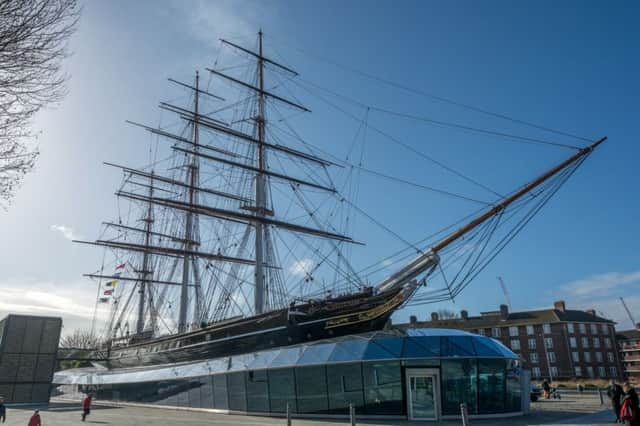Replica Cutty Sark could set sail from Glasgow
This article contains affiliate links. We may earn a small commission on items purchased through this article, but that does not affect our editorial judgement.


That’s one of the central aims of the group behind Cutty Sark 2, which hopes to recreate a near exact likeness of the clipper now in permanent dry dock in Greenwich.
Project director Vladimir Martus, a naval architect, visited Glasgow last weekend with several of his colleagues to look at potential sites where the ship could be built.
Advertisement
Hide AdAdvertisement
Hide Ad“The links between the Cutty Sark and the Clyde run very deep,” said Cutty Sark 2 spokesman Perry Joiner. “It’s part of its identity. It represented the pinnacle of shipbuilding in the age of sail, and, afterall, it’s named after a character in one of the most famous Scottish poems.


“We hope to create interest and educate the public in the traditional skills of shipbuilding, as well as preserve our maritime heritage for future generations.”
The group, which is a registered charity and has around 100 members based around the world, hopes a replica could provide jobs on the Clyde when built and then act as a training ship when complete.
Martus has already overseen the construction of other sailing ships, but this would represent by far his biggest project.


The group estimates construction would cost around £25m and has already held a small crowdfunding campaign to cover initial planning costs.
It is now conducting a detailed business plan before hiring a dedicated fundriasing team, with the aim of launching the finished replica in time for the 150th anniversary of the original ship’s launch in November 2019.
While she would share the same dimensions, 21st century maritime laws ensure that it could not be an exact copy.
“It will be as true to life as possible,” added Joiner. “It is a composite - the inside is made of steel but the hull is made of wood. It was a revolutionary design at the time and allowed it to be much lighter than her rivals.”
Advertisement
Hide AdAdvertisement
Hide AdAmong the sites the replica ship team have considered is Govan Graving Docks, a privately owned dry dock complex on the Clyde which has lain empty for 25 years.
A campaign group is calling for it to be preserved as a heritage park, and has mooted the Cutty Sark 2 as a potential project as an example.
“The process of learning and rediscovering the skills involved in building the ship makes Govan an attractive location, added Joiner.
The sailing era was already coming to an end when the Cutty Sark was launched in 1869 at the Scott & Linton yard in Dumbarton.
DOWNLOAD THE SCOTSMAN APP ON ITUNES OR GOOGLE PLAY
Known as a clipper - a mid-19th century type of sailing ship built for speed - such vessels were characterised by a narrow hull and large total sail area.
Cutty Sark was ordered by the shipping magnate John Willis and named after a character in Robert Burns’ classic poem Tam o’Shanter.
Although famously associated with the Chinese tea trade, Cutty Sark spent most of her working life at sea transporting wool from Australia. She last sailed in 1938 and became a cadet training ship.
In 1954 the Cutty Sark was towed to a custom-built dry dock in Greenwich, south London, where she has remained ever since.
Advertisement
Hide AdAdvertisement
Hide AdA devastating fire in 2007 almost completely destroyed the ship, prompting a £50m restoration. Critics suggested it should have been restored to sea worthy condition, but a focus on opening the vessel as a tourist attraction was given priority.
It was this decision that partly inspired Mr Martus to launch the Cutty Sark 2 project in 2015.
By then he had already overseen the building of the Shtandart, a replica of Peter the Great’s 1703 flagship frigate, of which he remains captain.